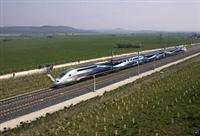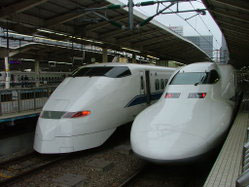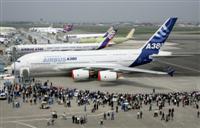
If it’s one thing I can’t stand, it’s when a good technology exists and no one rushes to use it to their best ability. More on that in a minute, but for now, kudos to the French for achieving the world record for a rail-based train’s tthe op speed, at 357.2 MPH. This is more than double the fastest of the AmTrak Acela line which is capable of high speed (125mph or so) on only sections the Northeast Cooridor only, a set of track running from D.C. to Boston. This linked article describes the sensations of passengers on today’s train ride. More importantly, the French (and much of the world) realize that high speed trains are a great idea, and something that ought to be implemented. France, England, Germany, Japan, and China are only some of the countries actively researching and developing high-speed rail lines, be it MagLev or traditional rail.
For now, congrats to the French.
It’s time for us in the United States to realize that high-speed rail is one of the best methods of transportation for the future. Surely, it’s not ready now, but we need to be developing fast-rail or MagLev technology. While we aren’t doing much, we are doing a little something. Several localities in the U.S. are either thinking of developing high-speed rail, or are at the Environmental Impact Statement stage of design. For example, California has created the California High Speed Rail Authority. The Baltimore/Washington D.C. MagLev Project seems stalled and going nowhere.
The United States has 300 million people, and growing. Population estimates continue to climb through this century. We simply can not keep building more and more roads to accommodate more and more cars, causing more and more pollution. Granted, in the U.S. we have a much greater east/west and north/south than other countries. France is approximately 600 miles in both east/west and north/south directions. For comparison, France is slightly less than twice the size of Colorado. Given the United States is 3,200 miles east/west, we do have quite a lot of distance to cover. Our infrastructure does require significant investment. Without making this critical investment, we run the risk of falling behind other nations, and in the 22nd century we’ll still have a 20th century transportation system.
Time for us to get our shit together. Limit our driving, increase R&D into light rail for communities and MagLev for city-to-city stops; Boston to D.C., D.C. to Chicago, D.C. to Atlanta, Atlanta to Miami, Atlanta to Houston, Chicago to Houston, Houston to Las Vegas, Las Vegas to San Diego and up the coast to Portland. See, I already have the route planned. 😉






